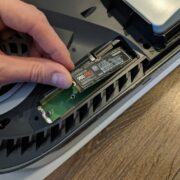Many industrial processes rely on compressed air systems as their foundation. Undiscovered breaches in these systems, however, cause large losses. They can cost you thousands of dollars a year, deplete your resources, and impair your productivity. A mere 3 mm discrepancy results in a decrease in pressure, air loss, and a thousandfold rise in energy expenses.
As a result, the identification and repair of compressed air leaks must take precedence in any organization that uses these systems. Understanding the types of leaks, why they occur, and how to find them will ensure that your system runs as smoothly as possible.
Table of Contents
What is compressed air leakage?
Leakage in the context of compressed air and gases is the inadvertent release of the gas into the atmosphere. Leaks typically occur at joints or component junctions in the pneumatic circuit, but they can also result from material failure, vibration, or corrosion. Physical damage can still lead to issues even far from the original damage location. For instance, a knocked-out pipe could push out a joint somewhere else.
Probably the most frequent cause of compressed air leakage is a lack of routine maintenance. Joints and seals may loosen due to vibration from routine operations, but they may deteriorate if other problems go unaddressed.Keep in mind that leakage is typically seen as distinct from compressed air venting via valve and actuator action in situations when some of the air energy has already been utilized.
Compressed air systems can account for a sizable amount of a plant’s total electricity usage since they are heavy electricity users. It is well acknowledged that maintaining 100% sealing in pneumatic systems is unlikely, and therefore, a 10% leakage may be considered acceptable.
This may seem like a large percentage, but leakage is frequently far higher than anticipated—figures as high as 40 or 50% are not out of the ordinary. As a result, an air leak detector plays a crucial role in the upkeep of compressed air systems.
Why is air leakage a concern for a business?
Any facility that uses compressed air needs to be aware of the potential costs of air leaks. Air leakage causes noticeable pressure drops that disrupt plant operations and, consequently, reduce plant efficiency. Here is a detailed explanation:
Air leaks lower the effectiveness of your operations
Your compressed air system leaks could have an immediate negative effect on your business. Your particular procedures will determine how this transpires, but decreased pressure may affect the functionality of pneumatic tools and cause slow production.
On the other hand, it can lead to uneven pressures, which would increase expensive manufacturing errors. In the worst-case scenario, pressure loss due to air leaks might lead to costly downtime if you have to suspend operations completely to do substantial system maintenance. Expand your horizons with expert advice and unique insights tailored to your interests; visit clipchamp.org and start learning today.
Air leaks are expensive
Your compressed air system should be able to maintain the pressure necessary for production and operational needs. Leaks can cause a system to lose up to 20% to 30% of its output. As a result, the compressor must operate harder to make up for it.
This leads to increased energy expenses and increased system wear and tear. If leaks are left unchecked, performance may decrease as your compressor strains to keep up pressure, which may negatively impact your operations.
The effect of air leaks on the environment
Compressed air leakage is one of the biggest environmental issues. A substantial amount of energy is lost as air leaks and enters the atmosphere. This energy waste adds to environmental issues like climate change.
Large volumes of CO2 are released into the atmosphere by leaks. Volatile organic chemicals, nitrous oxide, and methane are among the additional pollutants released into the environment by compressed air leaks. These pollutants might contribute to smog, acid rain, and other environmental problems.
The effect of air leaks on global energy usage
It is estimated that compressed air uses 100 billion kilowatt-hours of energy annually worldwide. This is the same as ten million homes’ annual electricity use. An estimated 30% of this energy is lost due to leakage.
This indicates that compressed air leaks waste 30 billion kilowatt-hours of energy annually. There is a big environmental impact from this lost energy. It fuels air pollution, climate change, and other environmental issues.
How to check your compressed air system for leaks
Using an ultrasonic air leak detector is the newest high-tech method. These ingenious portable gadgets have a camera with an ultrasonic image superimposed on it. This gives the air leak tester a dependable way to find leaks right at the source. This process does not impact the facility’s operation in any way.
An ultrasonic detector isolates changes that point to an air leak using a mix of high-pressure laminar flow and low-pressure turbulence. The ultrasonic signal becomes more prominent at the exact position of the leak, aiding in its isolation.
Other more recent but subpar air leak-detecting devices operate using infrared and live recordings. Infrared cameras can detect leak-induced heat loss. Though more expensive than an ultrasonic leak detector, this approach is precise and capable of finding leaks in difficult-to-reach places.
Conversely, microphones that detect the sound of air leaving from a leak are easy to use and reasonably priced. Yet, it is not as precise as leak detection using infrared or ultrasonic technology. For effective methods and related insights that provide value, check out cookiebot.org.
What are some ways to control and stop leaks?
Always choose prevention over remedy. Ensuring your compressed air system installation is done correctly might assist in preventing leaks. Hire knowledgeable and competent professionals.
After installation, having your system serviced and maintained on a regular basis will help prevent leaks that could be brought on by operational factors such as excessive condensation or vibration. For a sleek and efficient system interface, check out Proton Theme to enhance your experience with advanced technological solutions.
Leaks will still occur, though, so having a strategy in place to deal with them is essential. Monitoring should be part of the plan to make sure that any variations in pressure or flow are looked into and addressed. Adding an air leak detector to your system will enable you to remotely monitor its health and continuously collect data.
The takeaway
Leak detection with ultrasonic technology has become the gold standard. It tracks the high-frequency, inaudible sounds that are produced by leaking air. Consequently, ultrasonic detection can rapidly deliver a thorough and ranked list of system leaks without interfering with regular system operations.














